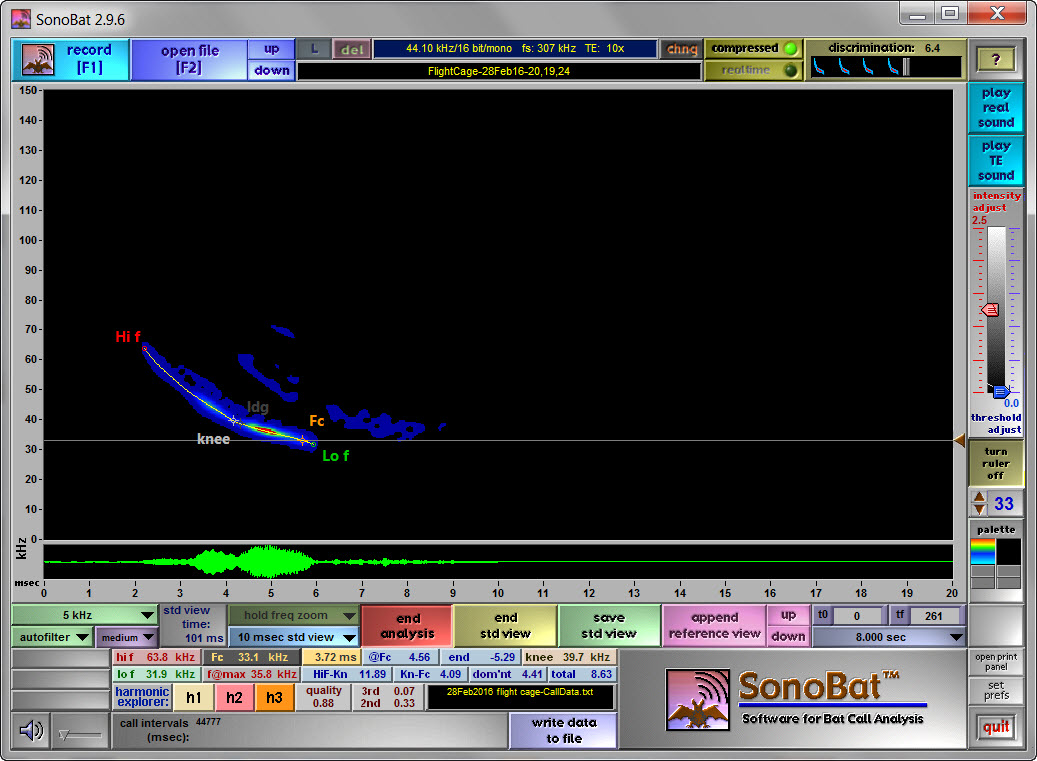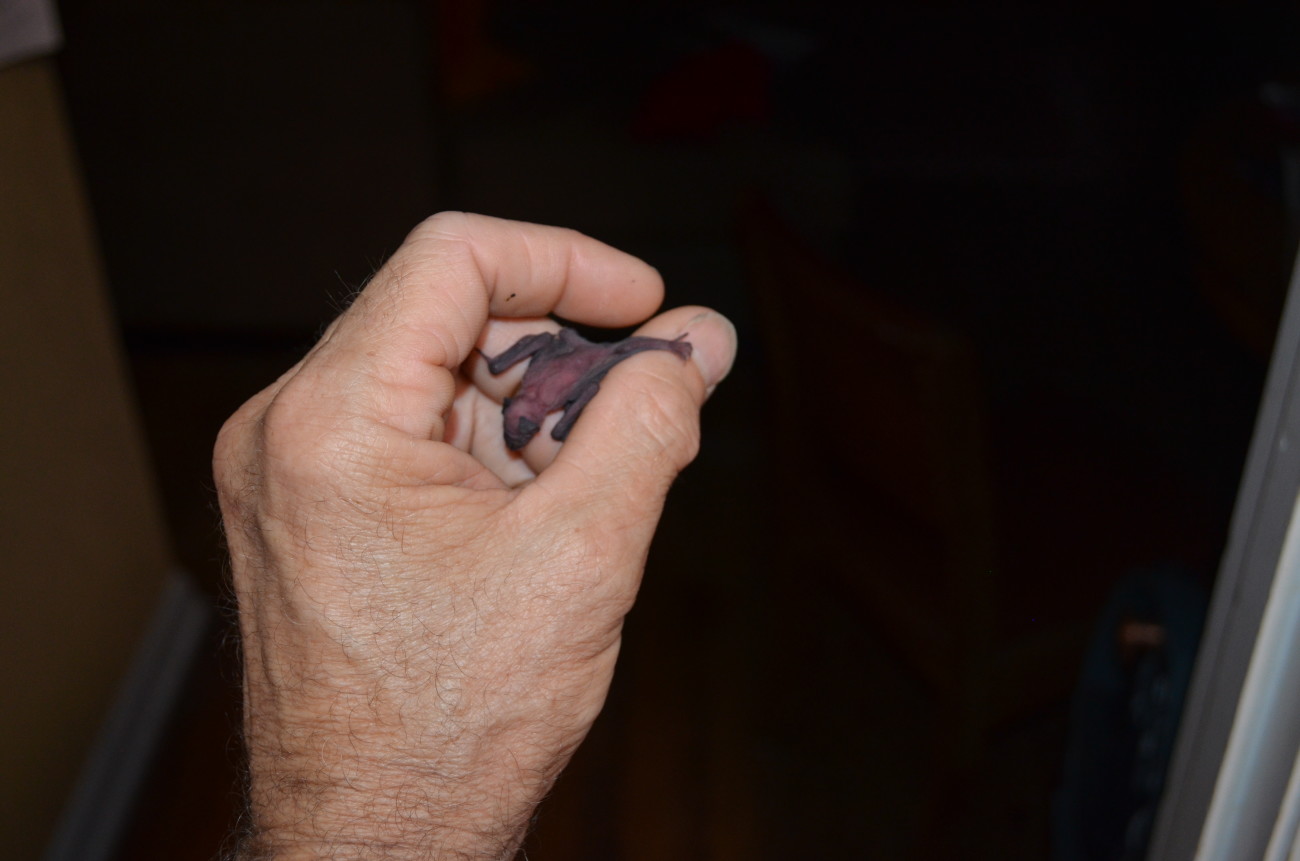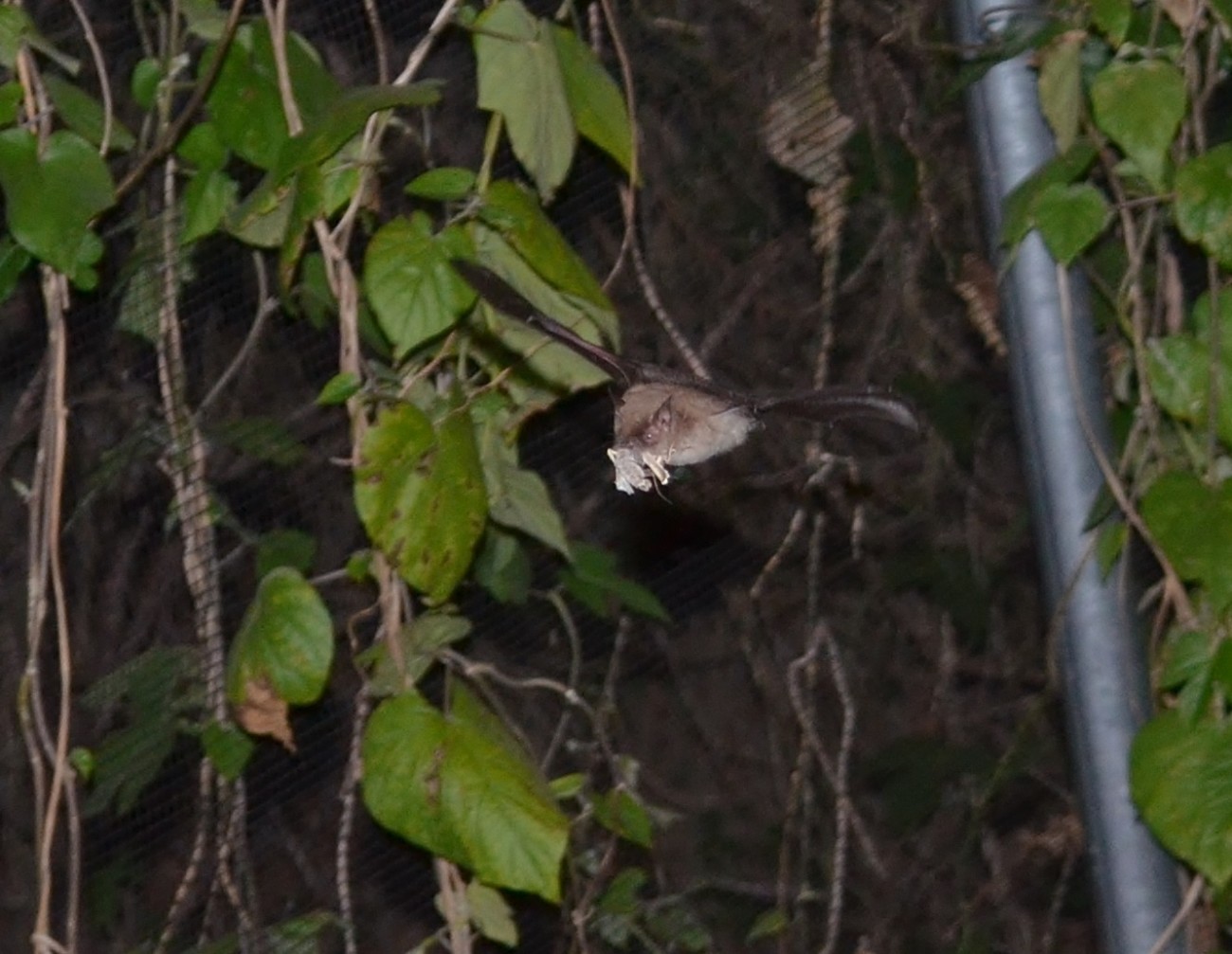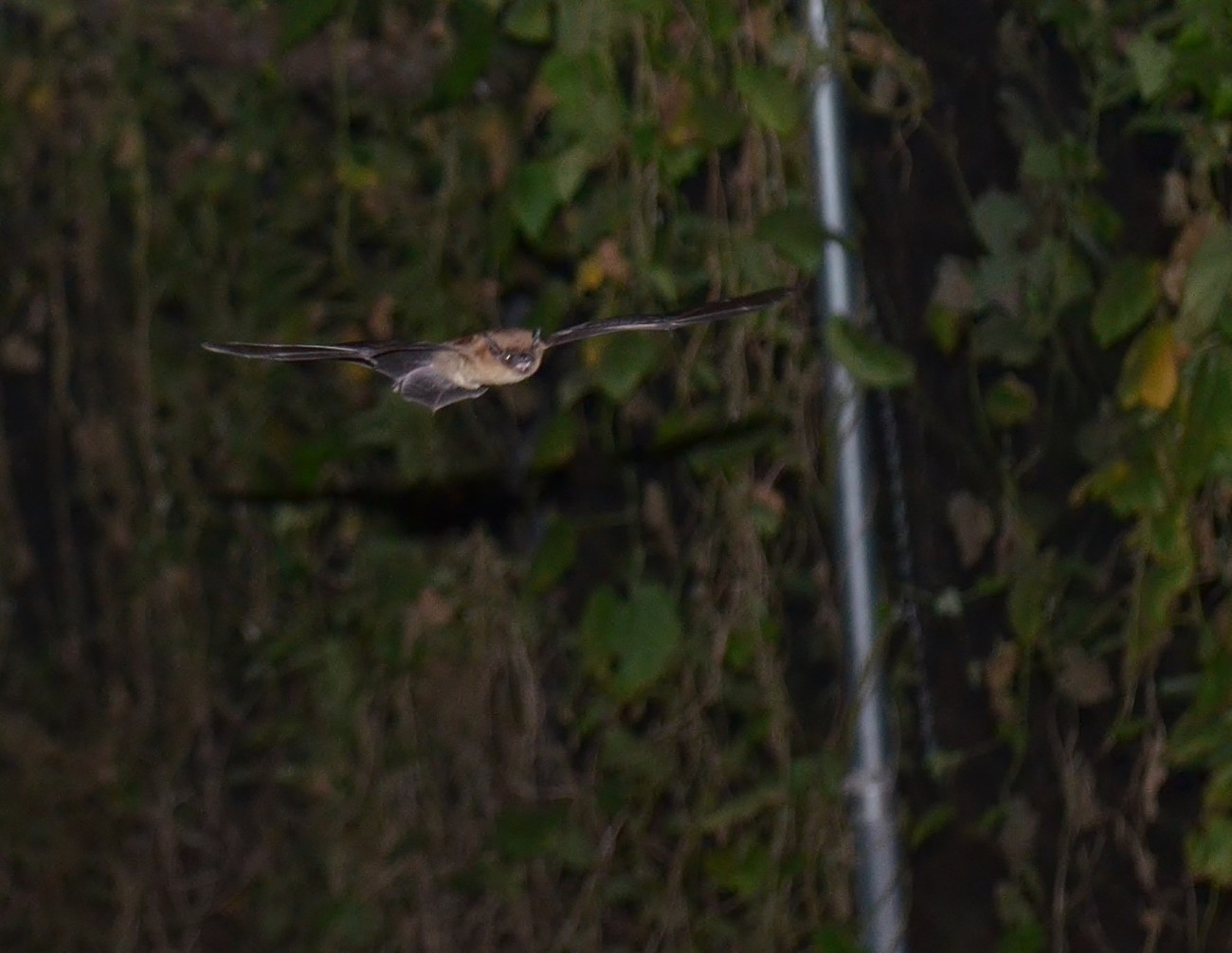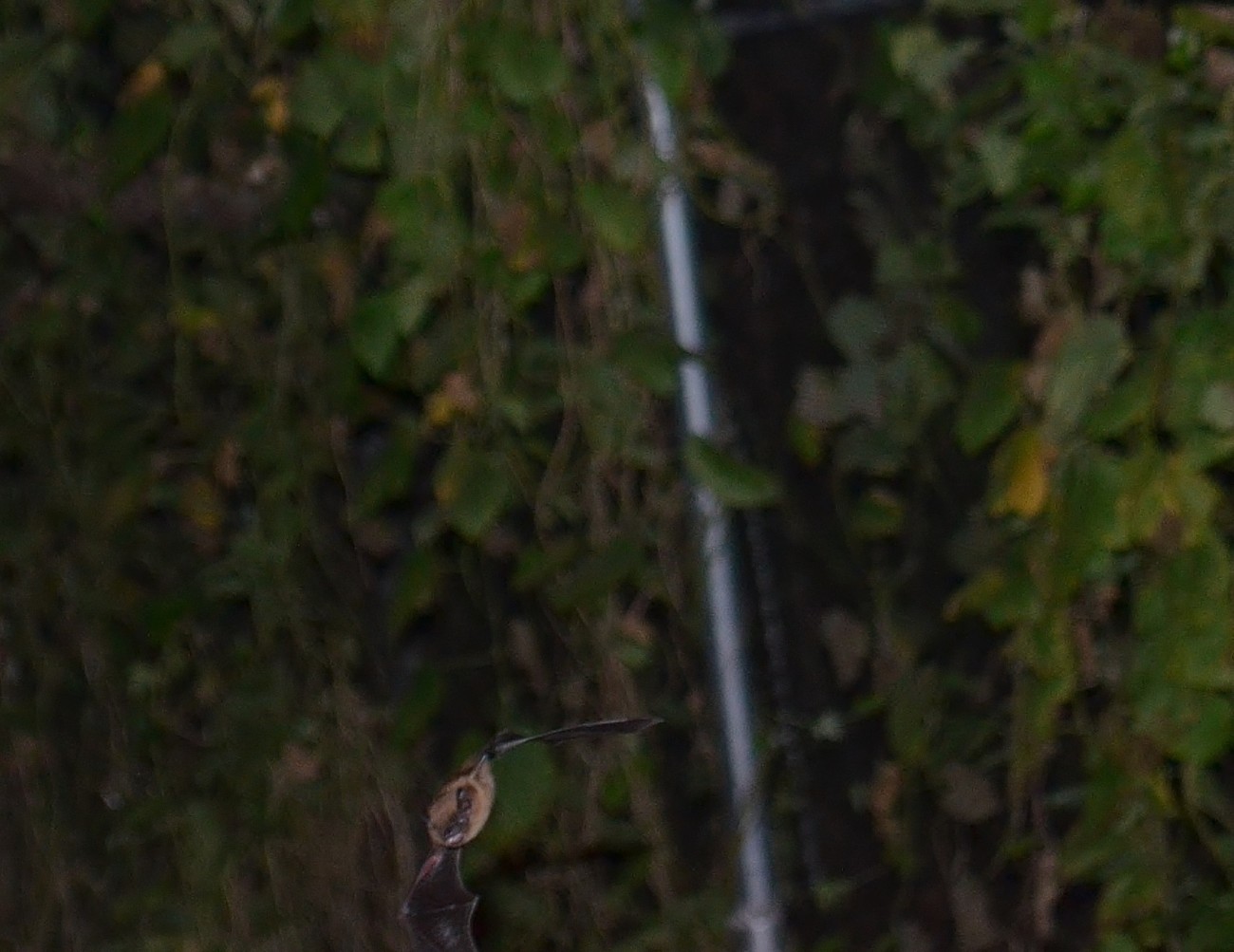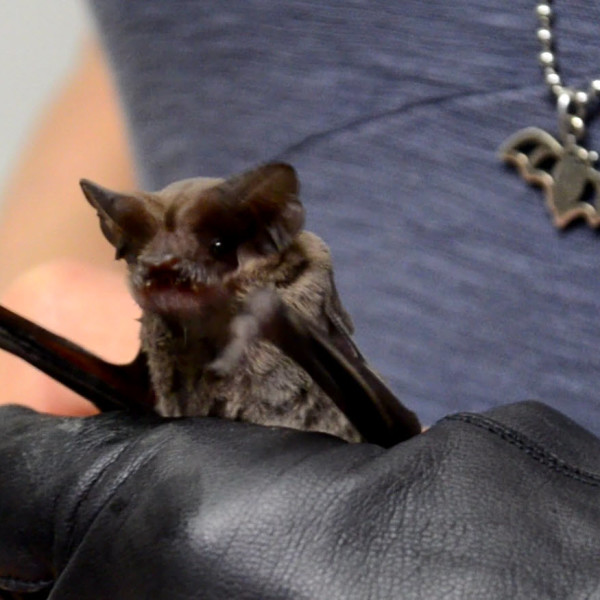She’s sustaining flight tonight
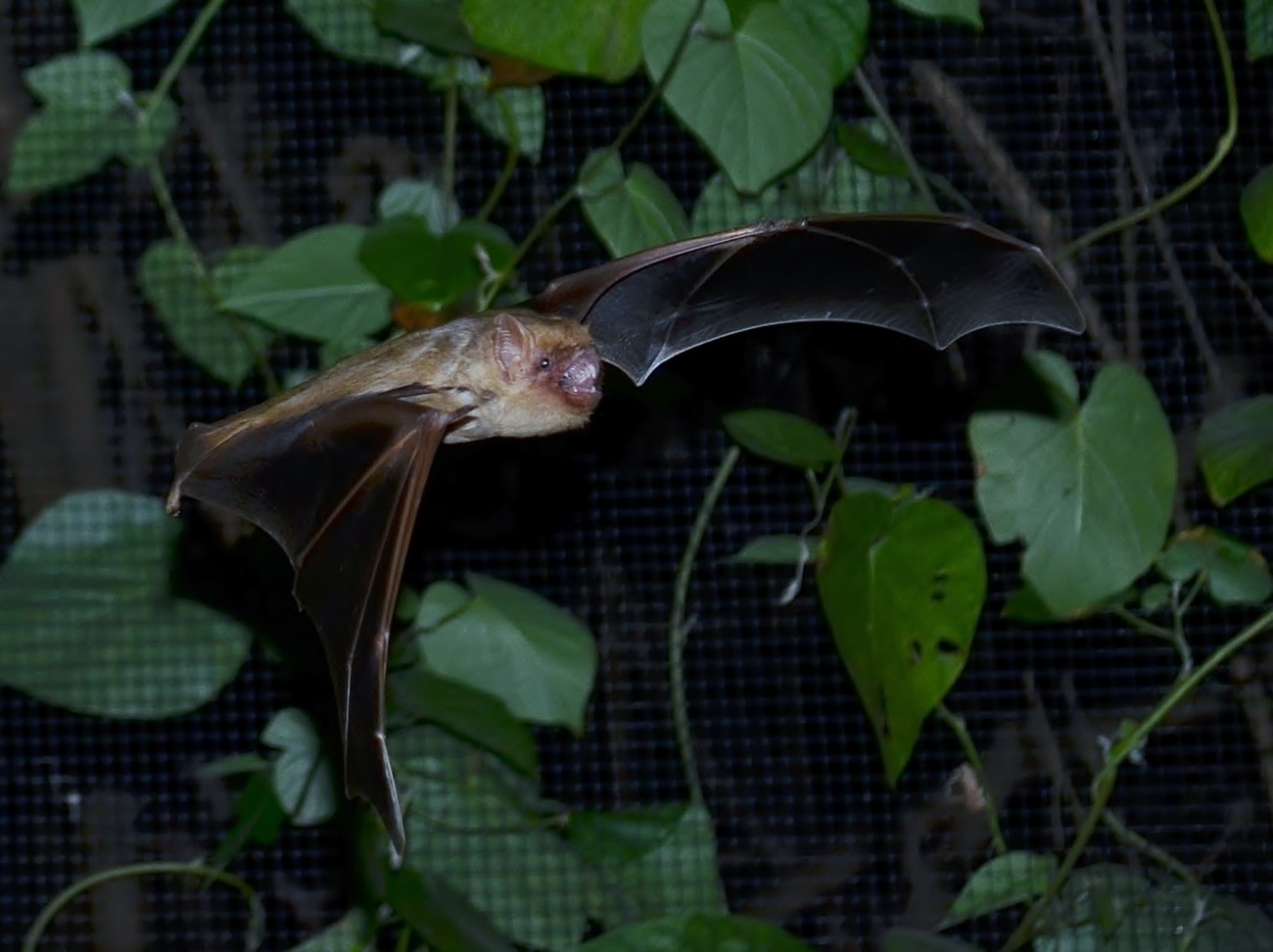
Yes she has teeth, but she’s not snarling, just echolocating, to see in the dark and to find one of the juicy moths or beetles flying about the enclosure. After parsing many call sequences from that evening, we analyzed this one call out of a call sequence we think is hers. Many of our local species, including yellows are not in standard call libraries, but this call is similar to others we have recorded from northern yellows. We hope to get a voucher call when she is released soon. Voucher calls are recorded from a hand-released bat when no others are flying in the immediate vicinity. They form the basis of call libraries and that is what we’ll use to develop our own.
